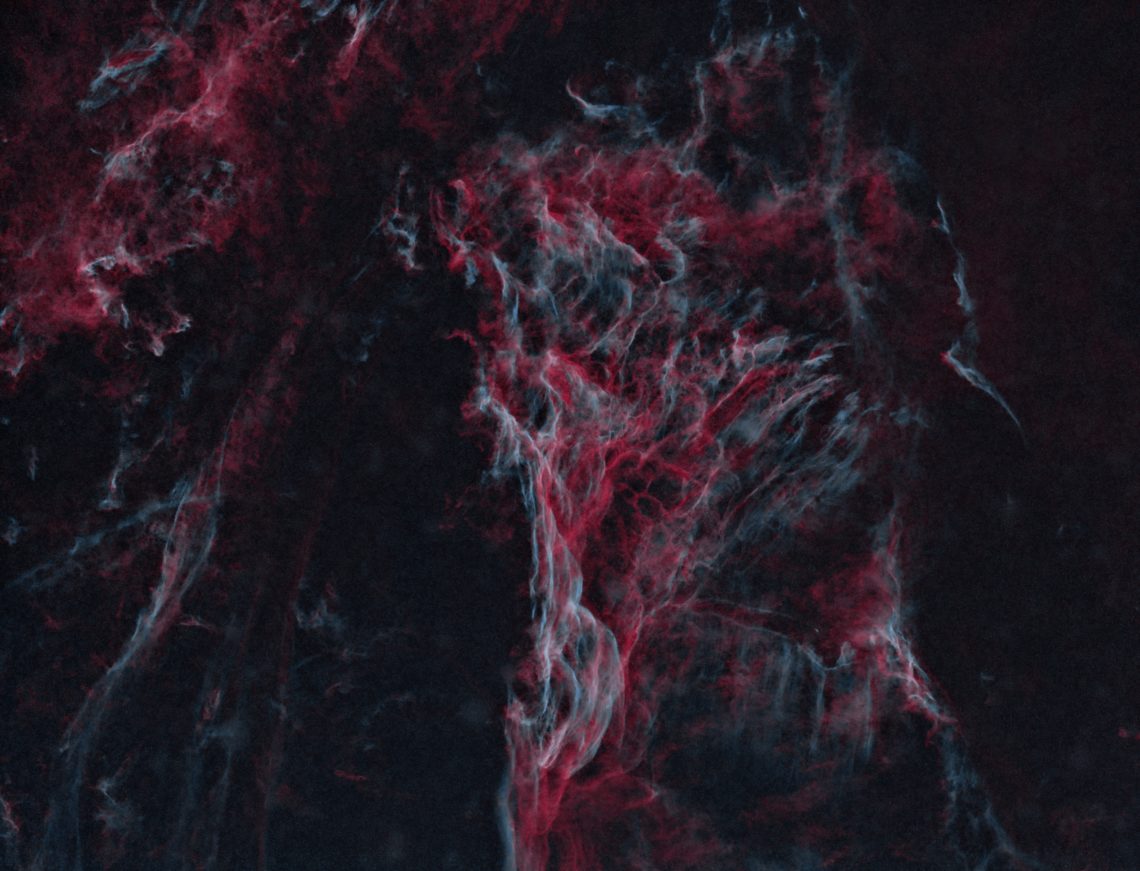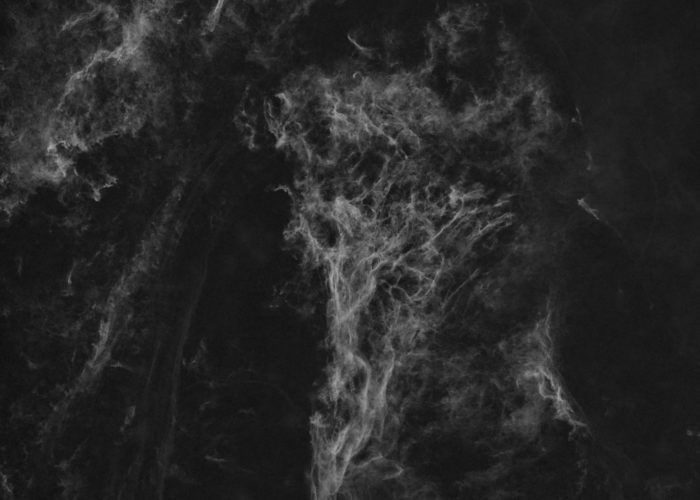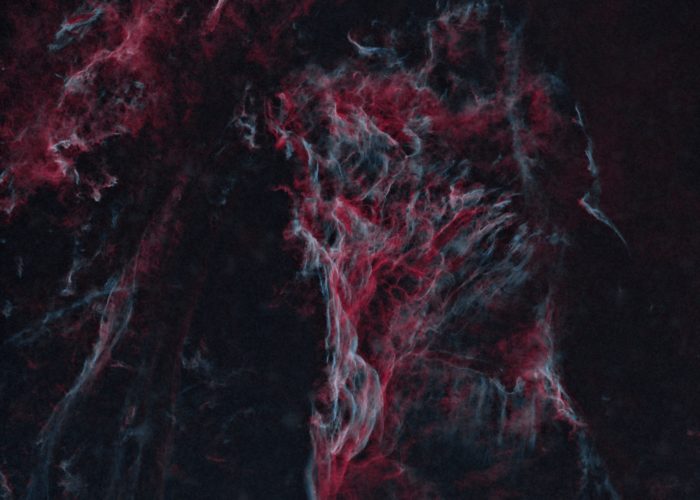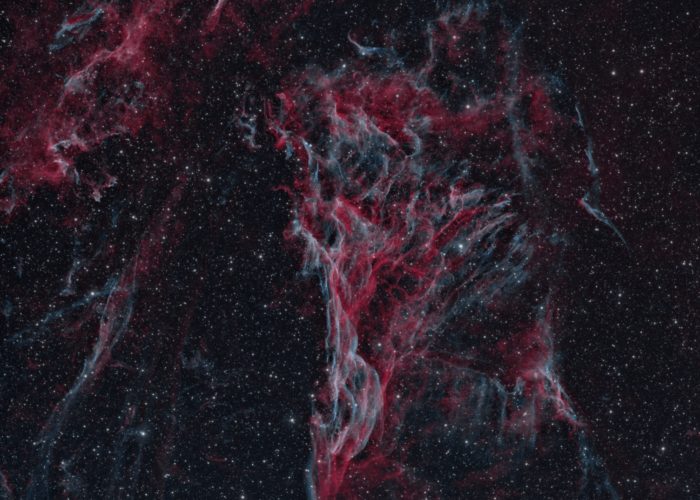After the first-light version of Pickering’s Triangle we collected a few hours more data of this fascinating part of the Cygnus Loop. This combined set of 15 hours of H-alpha and OIII narrowband data allows to bring out all the intricate structure in this supernova remnant.
To emphasize the nebulosity even more, the stars were removed from both narrowband channels using StarNet++ before further processing and combination into a bi-color image. Make sure to look at this image in the full-screen viewer!

The animation below shows the individual narrowband channels as grayscale images, then the combined bi-color image, and finally the same image with star added back in. It shows nicely that the spatial distribution of H and O gas shows a different morphology.
| Telescope | CFF Triplet APO 160mm, Riccardi Reducer, f=810mm |
| Camera | ASI1600MM Pro, 8-Slot Filter Wheel with Baader Filters |
| Exposures | HO, 95,84 x 300sec, ~15 hours total |
| Data taken | 23 – 25 August 2019 + 10 – 11 September 2019 |
| Site | TURMX @ E-EyE Observatory, Extremadura |
| Processing | Robert Roth, 12 October 2019 |




